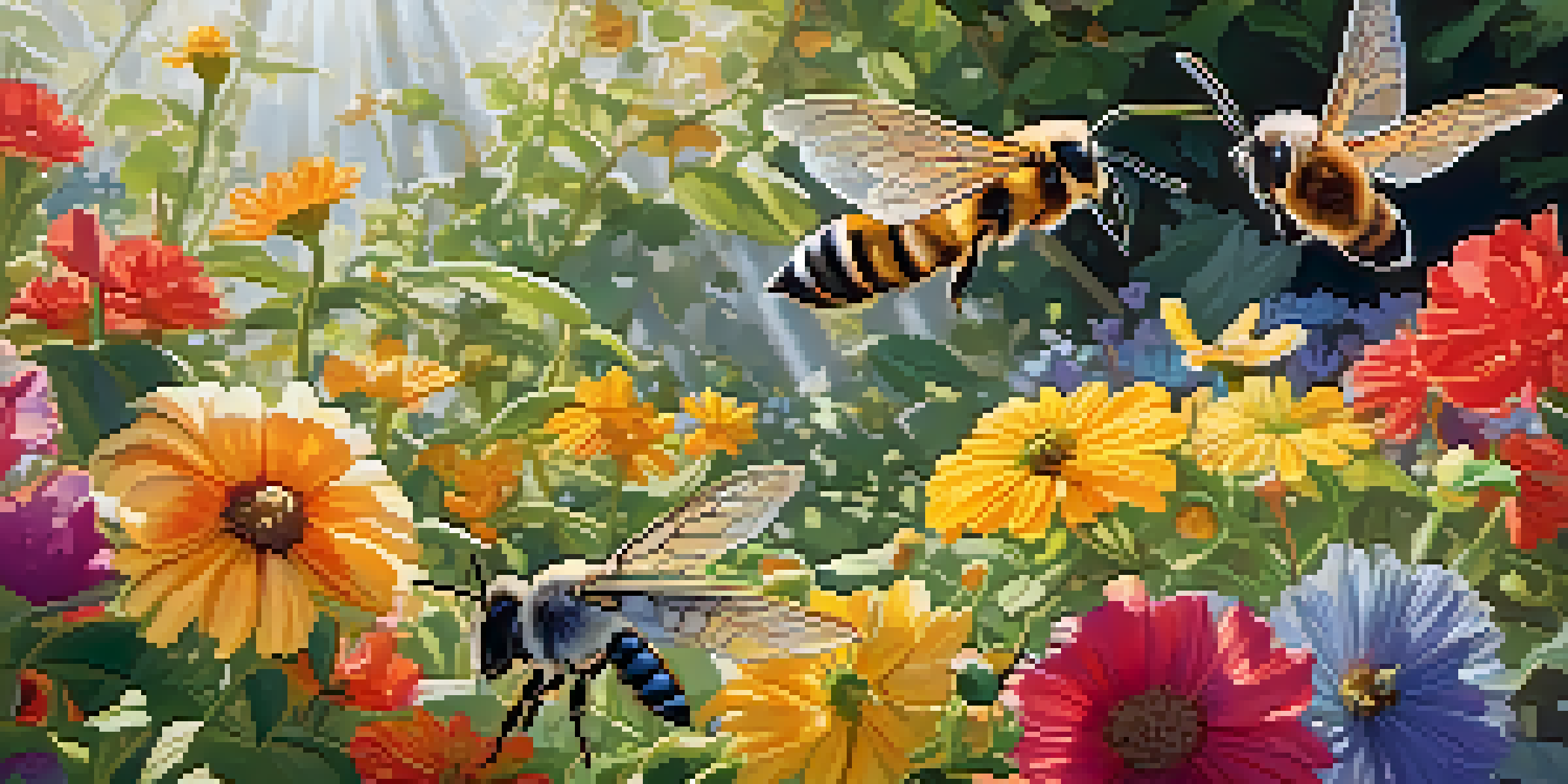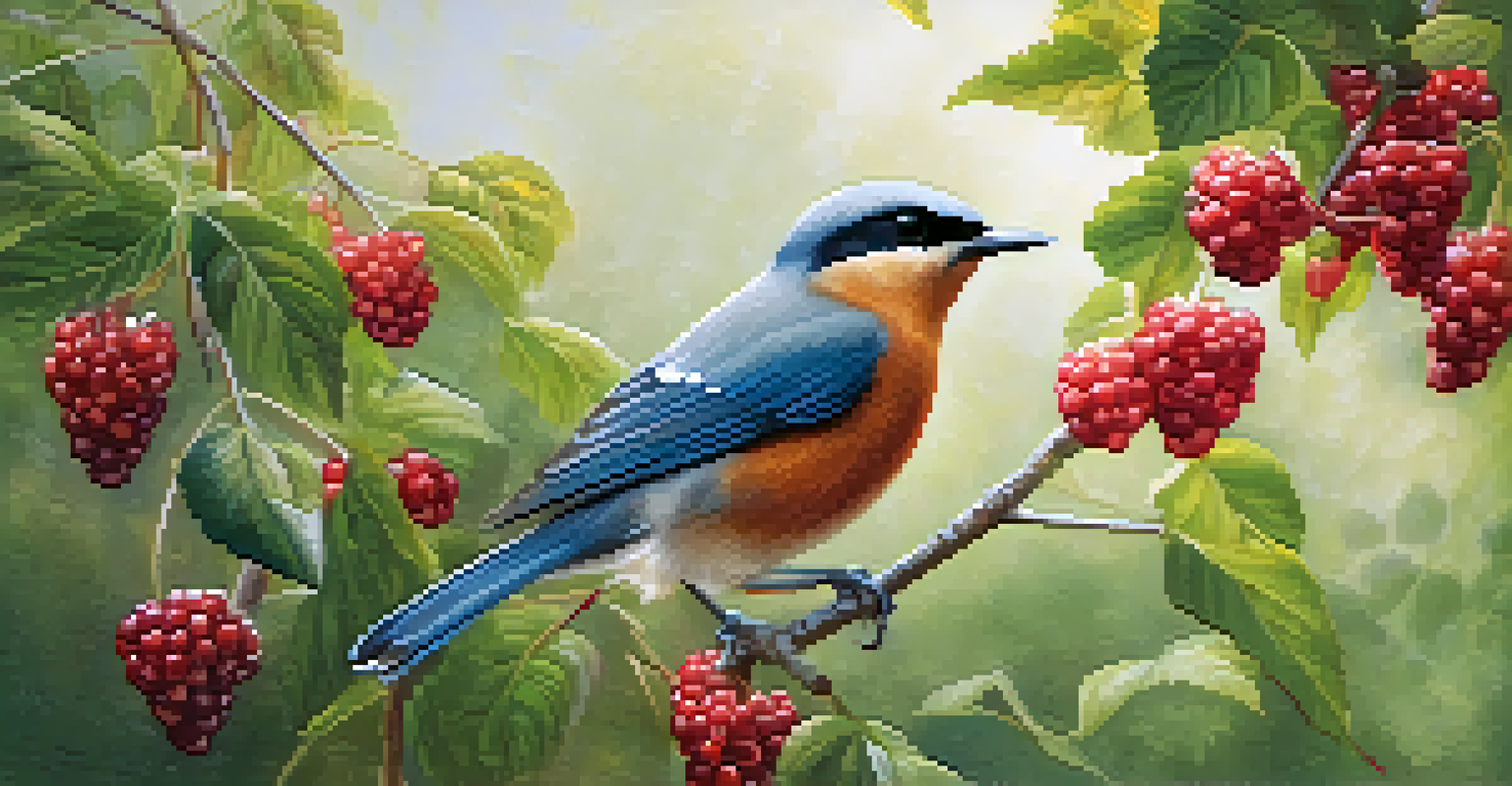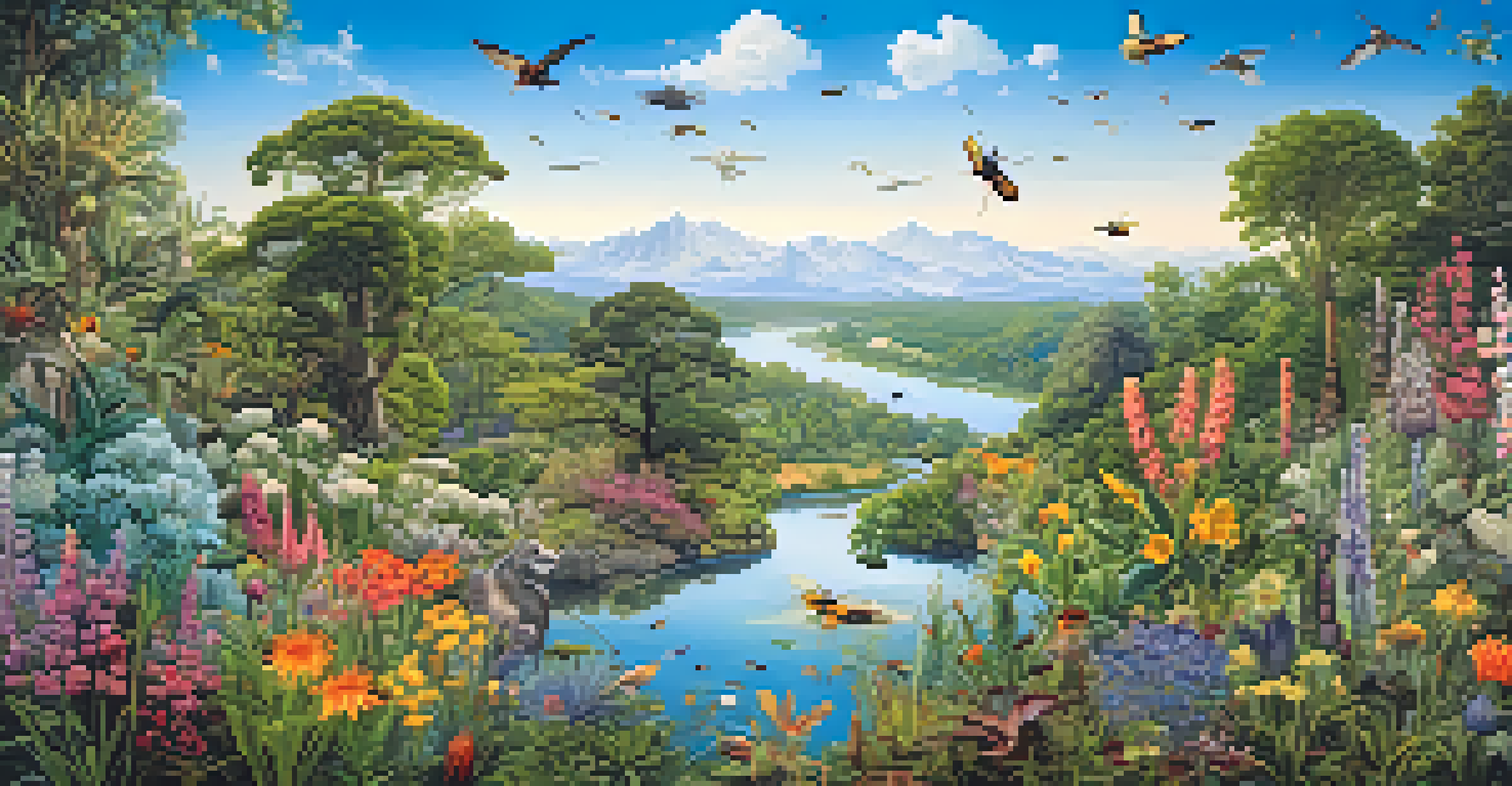Plant-Animal Interactions: Pollination and Seed Dispersal

The Importance of Plant-Animal Interactions
Plant-animal interactions are crucial for maintaining healthy ecosystems. They help in the reproduction of plants and ensure a diverse range of species. By relying on animals for pollination and seed dispersal, plants can expand their reach and adapt to various environments.
The greatest threat to our planet is the belief that someone else will save it.
These interactions show a beautiful symbiosis; plants provide food and shelter for animals, while animals assist in the plants' lifecycle. This mutual benefit highlights the interconnectedness of life. When one part of this relationship is disrupted, it can have a ripple effect on the entire ecosystem.
Understanding these interactions can help us appreciate the complexity of nature. For example, when we see bees buzzing around flowers, we might not realize they are doing much more than just collecting nectar—they are essential for the plants' reproduction.
Pollination: The Key to Plant Reproduction
Pollination is the process through which pollen from the male part of a flower fertilizes the female part. This process can occur through various agents, including wind, water, and most notably, animals. In fact, many flowering plants have evolved to attract specific pollinators like bees, butterflies, and birds.

For example, think of a bee buzzing from one flower to another. As it collects nectar, it inadvertently transfers pollen, enabling fertilization. This not only helps plants reproduce but also supports the food chain, as many of these plants produce fruits and seeds that are vital for various animal species.
Plant-Animal Interactions Sustain Ecosystems
These interactions are vital for plant reproduction and overall biodiversity, demonstrating the interconnectedness of life.
Without effective pollination, many plants would struggle to reproduce, leading to decreased biodiversity. This highlights the importance of protecting pollinator species, as their decline can significantly impact ecosystems and food sources for humans and wildlife alike.
The Role of Animals in Seed Dispersal
Seed dispersal is another essential interaction between plants and animals. Once seeds are formed, they need to be spread away from the parent plant to grow in new locations. Animals play a pivotal role in this process, often consuming fruits and excreting the seeds in different areas.
Nature is not a place to visit. It is home.
Take, for instance, a bird eating berries. The seeds inside the berries aren't digested and are later dropped in a new spot, ready to sprout. This not only helps the plant colonize new areas but also ensures genetic diversity, as seeds are spread across different habitats.
Moreover, some plants have developed specific adaptations to attract animals for seed dispersal. For example, seeds with hooks or sticky surfaces can cling to animal fur, hitching a ride to new locations. This clever strategy ensures that plants can thrive in a variety of environments.
Mutualism: A Win-Win Situation
The relationship between plants and their animal partners is often described as mutualism, where both parties benefit. For example, flowering plants provide nectar and pollen as food sources for pollinators, while the pollinators help facilitate plant reproduction. This creates a cycle of support that enhances biodiversity.
In many ecosystems, this mutualistic relationship goes beyond just one plant and one animal. It's a web of interactions where numerous species rely on each other for survival. When we see a butterfly fluttering around a garden, it's not just visiting a single flower; it's part of a larger ecosystem at work.
Habitat Loss Threatens Biodiversity
Urbanization and agriculture disrupt vital plant-animal relationships, leading to declines in pollinator populations and plant reproduction.
Mutualism is a brilliant example of how cooperation in nature leads to resilience. By working together, plants and animals can adapt to changes and challenges in their environment, ensuring the sustainability of their ecosystems.
The Impact of Habitat Loss on These Interactions
As urbanization and agriculture expand, many natural habitats are lost, disrupting plant-animal interactions. This loss can lead to a decline in pollinator populations and hinder seed dispersal, ultimately affecting plant reproduction and biodiversity. For example, the decline of bee populations has raised concerns about the future of many flowering plants.
When habitats are fragmented, animals may find it challenging to locate food sources or suitable nesting areas. This can lead to reduced visitation rates to flowers and less effective pollination, further exacerbating the issue. The cascading effects of habitat loss highlight the importance of conservation efforts.
Protecting and restoring habitats can help revive these interactions. Initiatives like creating pollinator gardens or preserving natural landscapes can encourage biodiversity and create a healthier ecosystem for both plants and animals.
How Climate Change Affects Plant-Animal Interactions
Climate change poses significant threats to plant-animal interactions. As temperatures rise and weather patterns shift, the timing of flowering plants and pollinator activity can become misaligned. This mismatch can lead to reduced pollination success, affecting plant reproduction.
For example, if flowers bloom earlier due to warmer temperatures, but their pollinators aren't active yet, the plants may miss out on critical opportunities for fertilization. This can lead to lower seed production and ultimately impact the entire food chain.
Climate Change Disrupts Natural Cycles
Shifts in climate can misalign the timing of flowering plants and their pollinators, impacting successful reproduction and food chains.
Additionally, changing climates can alter the habitats that both plants and animals rely on, pushing them to adapt or migrate. Such shifts can disrupt established interactions, making it essential for conservationists to monitor these changes and implement appropriate strategies.
Conservation Efforts to Protect These Interactions
Conservation efforts are crucial for safeguarding the delicate balance between plants and animals. By promoting biodiversity and protecting natural habitats, we can ensure the survival of both pollinators and the plants that depend on them. Initiatives like creating wildlife corridors and preserving wetlands can enhance these interactions.
Community involvement plays a key role in conservation as well. Educating the public about the importance of pollinators and encouraging practices like planting native species can help support local ecosystems. Simple actions, like reducing pesticide use, can also make a significant difference.

Ultimately, fostering a deeper understanding of plant-animal interactions can inspire collective action. By valuing and protecting these relationships, we contribute to a healthier planet, ensuring that future generations can enjoy the beauty of nature and its many wonders.